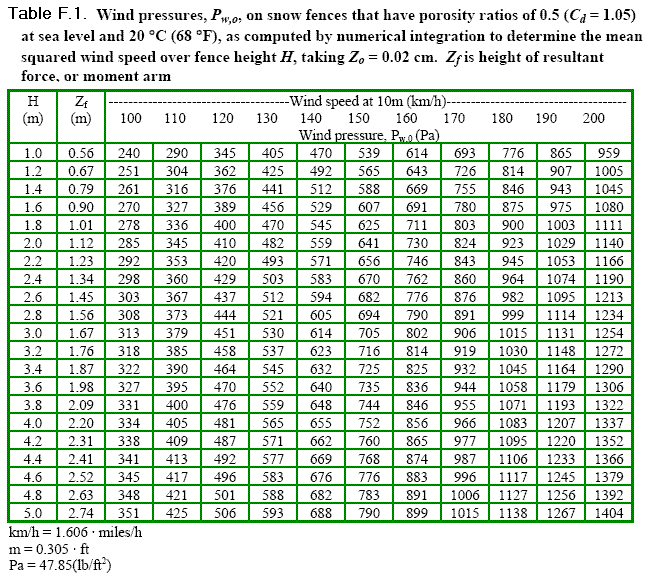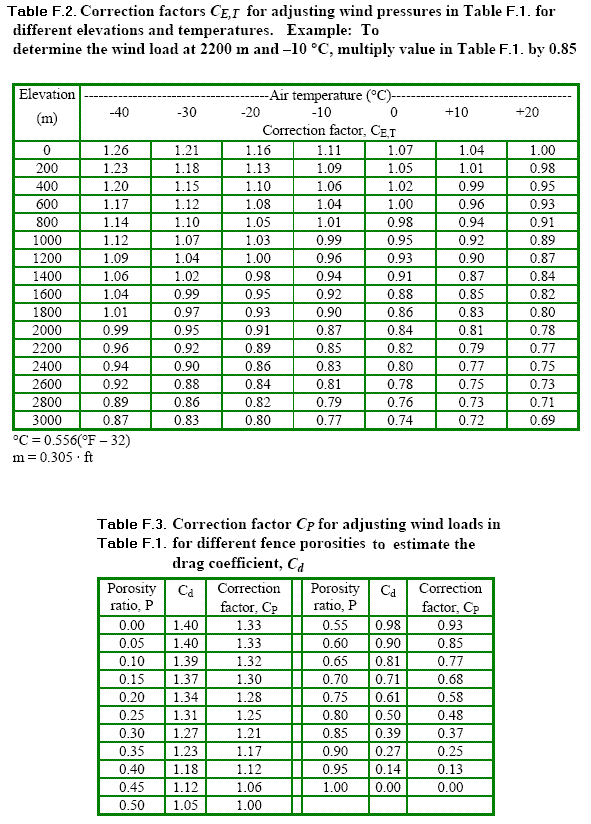
Wind Load Conversions:
The procedure for calculating wind pressures using Tables F.1. to F.3.
follows:
1. Determine required height (Hs) and porosity
(P).
2. Determine the design maximum wind speed from the climate history
(e.g., ~90 mph, 50-year return, ~97 mph, 100-year return, ~111 mph,
500-year return).
3. Determine the elevation of the site (altitude), and the lowest
temperature expected to occur with the design wind speed.
4. From Table F.1., read the wind pressure, Pw,o, for
a fence with porosity 0.50 at sea-level and 20°C (68°F).
5. From Table F.2., determine the correction factor
(CE,T) appropriate for the elevation and design
temperature of the fence site.
6. From Table F.3., determine the correction factor
(Cp) for the porosity of the fence.
7. Multiply the value obtained in Step 4 by the correction factors
obtained in Steps 5 and 6 to obtain the design wind pressure
Pw.


State Climate Office | Water Resources Data System
Last Modified: Friday, 23-May-2025 08:49:40 MDT